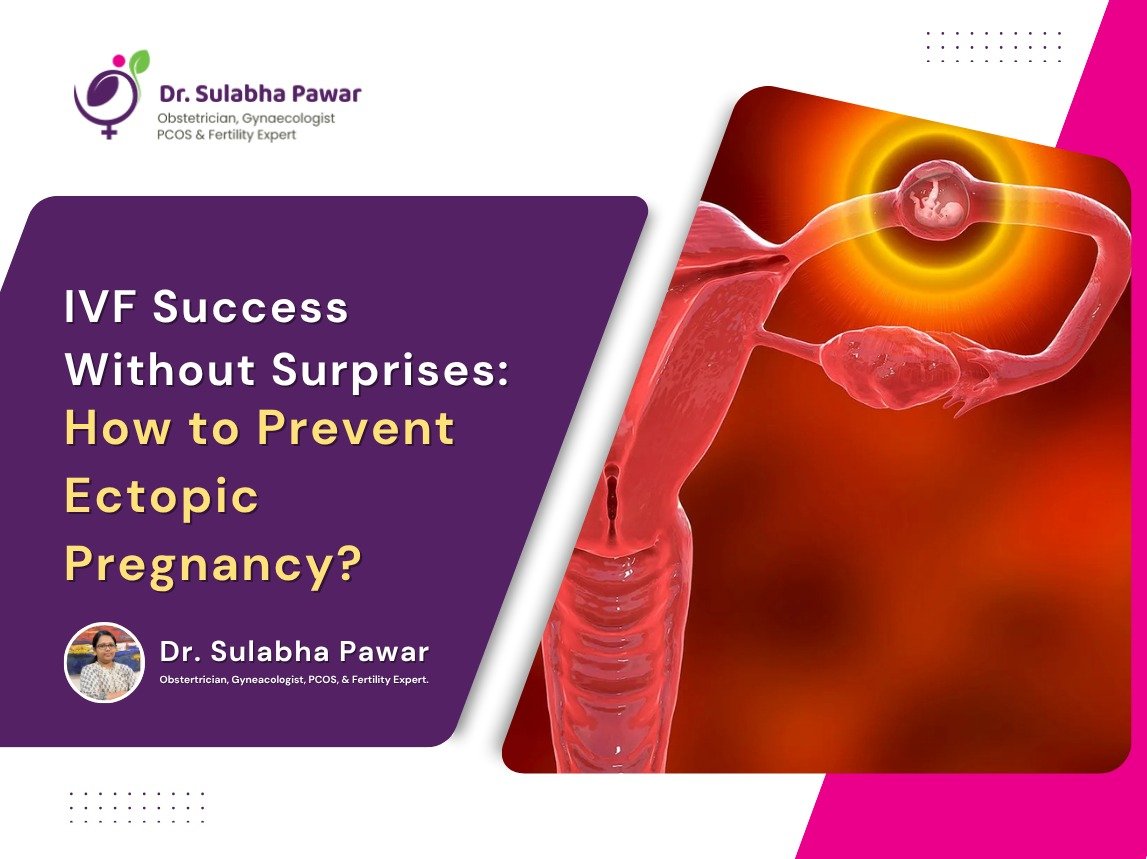IVF Success Without Surprises: How to Prevent Ectopic Pregnancy - Dr. Sulabha Pawar
IVF (In Vitro Fertilization) has been a life-changing solution for couples facing infertility. However, like any medical procedure, it carries certain risks—one of them being ectopic pregnancy, where the embryo implants outside the uterus, commonly in the fallopian tube. Although rare in IVF (2-5%), it is a serious condition that requires immediate attention. The good news? Ectopic pregnancies can be largely prevented with the right precautions during IVF.
What is an Ectopic Pregnancy?
An ectopic pregnancy occurs when a fertilized egg implants outside the uterine cavity, often in the fallopian tube. This condition is not viable and can cause internal bleeding or life-threatening complications if not treated in time.
Why Does Ectopic Pregnancy Happen During IVF?
While IVF bypasses natural conception by transferring embryos directly into the uterus, ectopic pregnancies may still occur due to:
- Retrograde migration of the embryo into the fallopian tube.
- Pre-existing tubal damage or infections.
- Multiple embryo transfers, increasing the chance of improper implantation.
- Incorrect transfer techniques or uterine contractions pushing embryos.
7 Ways to Reduce the Risk of Ectopic Pregnancy with IVF
1. Proper Evaluation of Fallopian Tubes
Before IVF, a thorough assessment of your fallopian tubes (via HSG or laparoscopy) helps detect blockages, infections, or hydrosalpinx, which are known risk factors. If tubes are damaged, doctors may recommend removal or clipping to prevent ectopic risk.
2. Selective Embryo Transfer Techniques
Advanced embryo transfer techniques under ultrasound guidance ensure precise placement of the embryo in the uterine cavity—away from the tubal openings.
3. Transferring Embryos at the Blastocyst Stage
Blastocyst-stage (day 5) embryos have a higher implantation potential and are more likely to implant correctly in the uterus, lowering the chance of abnormal implantation.
4. Limiting the Number of Embryos Transferred
Single embryo transfer (SET) minimizes risks associated with multiple embryo placements, including ectopic or heterotopic pregnancies.
5. Managing Uterine Contractions During Transfer
Use of gentle catheter techniques and medications like progesterone may help reduce uterine contractions during the transfer process that could push the embryo toward the tubes.
6. Monitoring Hormone Levels
High estrogen levels can overstimulate the uterus. Controlled ovarian stimulation protocols and close monitoring of hormone levels can prevent complications that contribute to ectopic pregnancy.
7. Early Pregnancy Monitoring
After IVF, regular beta-hCG monitoring and early transvaginal ultrasounds are essential to confirm intrauterine pregnancy and rule out ectopic implantation.
Signs of Ectopic Pregnancy to Watch For
If you’re undergoing IVF and experience any of the following, consult your doctor immediately:
- Sharp pelvic or abdominal pain
- Vaginal spotting or bleeding
- Shoulder pain
- Dizziness or fainting
Ectopic pregnancies are rare but serious IVF complications. Thankfully, with modern techniques, proper screening, and careful embryo transfer, the risks can be greatly reduced. Choosing an experienced fertility clinic and following your doctor’s advice will go a long way in ensuring a safe, healthy pregnancy journey.




